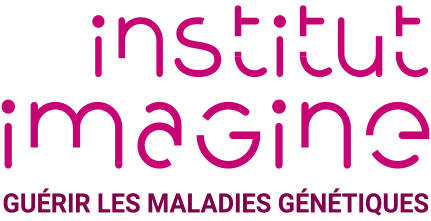Presentation
Annarita’s main research interests are the transcriptional control of hematopoiesis, and the development of therapeutic approaches to hematologic genetic disorders. As a PhD student with Giuliana Ferrari at TIGET (Italy), she acquired scientific expertise in hematology and in lentiviral (LV) vector technology for the genetic modification of hematopoietic stem cells (HSCs) and other cell types (Bonanomi, J Neurosci. 2005; Cattoglio, Blood, 2007). In this context, she generated a β-globin LV and demonstrated rescue of the thalassemic phenotype in a murine model of the disease (Miccio, PNAS, 2008). This LV has been successfully used in an early clinical trial for β-thalassemia and is currently under clinical development. During her postdoctoral period in Gerd Blobel's lab (CHOP, USA) and later as an assistant professor at University of Modena (Italy), she gained experience in epigenetics and the regulation of gene expression in erythroid development and in evaluating the safety and efficacy of gene therapy approaches for hematopoietic disorders (Miccio, EMBO J, 2010; Miccio and Blobel, Mol Cell Biol., 2010 and Gregory, Miccio, Blood, 2010; Moiani, J Clin Invest. 2012). In 2014, Annarita was appointed as a Lab Director at the Imagine Institute (Paris, France), where she pursued her studies on transcriptional regulation in normal and diseased stem cells and their progeny (Cavazza, Stem Cell Reports, 2016; Romano, Scientific Reports, 2016; Antoniani, Stem Cells Transl Med. 2017; Lagresle-Peyrou, Haematologica, 2018). These basic research studies were instrumental in developing novel LV- and genome editing-based strategies for the treatment of β-hemoglobinopathies. In particular, she has optimized the design of a LV expressing an antisickling transgene that is currently employed in a clinical trial for sickle cell disease expected to start in 2019 (Weber, Mol Ther Methods Clin Dev., 2018). In parallel, she developed CRISPR/Cas9 editing strategies for β-hemoglobinopathies (Antoniani, Blood, 2018; Weber, Science Advances, in press) and optimized the delivery of CRISPR/Cas9 in HSPCs (Lattanzi, Mol Ther. 2018).
Resources & publications
-
 2023Journal (source)Mol Ther Nucleic Acids
2023Journal (source)Mol Ther Nucleic AcidsProgress and harmonization of gene editing to treat human diseases: Proceedin...
-
 2006Journal (source)J. Neurosci.
2006Journal (source)J. Neurosci.Phosphorylation of synapsin I by cAMP-dependent protein kinase controls synap...
-
 2019Journal (source)Haematologica
2019Journal (source)HaematologicaPlerixafor enables safe, rapid, efficient mobilization of hematopoietic stem ...
-
 2020Journal (source)Sci Adv
2020Journal (source)Sci AdvEditing a γ-globin repressor binding site restores fetal hemoglobin synthesis...
-
 2020Journal (source)iScience
2020Journal (source)iScienceGATA Factor-Mediated Gene Regulation in Human Erythropoiesis.
-
 2022Journal (source)Mol Ther
2022Journal (source)Mol TherNovel genome-editing-based approaches to treat motor neuron diseases: Promise...
-
 Journal (source)Prog Mol Biol Transl Sci
Journal (source)Prog Mol Biol Transl SciGenome editing approaches to β-hemoglobinopathies.
-
 2022Journal (source)Nat Med
2022Journal (source)Nat MedLong-term outcomes of lentiviral gene therapy for the β-hemoglobinopathies: t...
-
 2022Journal (source)Nat Commun
2022Journal (source)Nat CommunBase-editing-mediated dissection of a γ-globin cis-regulatory element for the...
-
 2023Journal (source)Mol Ther Nucleic Acids
2023Journal (source)Mol Ther Nucleic AcidsNovel lentiviral vectors for gene therapy of sickle cell disease combining ge...
-
 2024Journal (source)Blood Rev
2024Journal (source)Blood RevRevolutionising healing: Gene Editing's breakthrough against sickle cell dise...
-
 2006Journal (source)Mol. Cell. Biol.
2006Journal (source)Mol. Cell. Biol.Hypomorphic mutation of the TALE gene Prep1 (pKnox1) causes a major reduction...
-
 Journal (source)Annu Rev Genomics Hum Genet
Journal (source)Annu Rev Genomics Hum GenetSickle Cell Disease: From Genetics to Curative Approaches.
-
 2023Journal (source)Blood
2023Journal (source)BloodAdenine base editor-mediated correction of the common and severe IVS1-110 (G>...
-
 2023Journal (source)Genes (Basel)
2023Journal (source)Genes (Basel)Epigenetic Regulation of β-Globin Genes and the Potential to Treat Hemoglobin...
-
 2022Journal (source)Stem Cells Transl Med
2022Journal (source)Stem Cells Transl MedCRISPRthripsis: The Risk of CRISPR/Cas9-induced Chromothripsis in Gene Therapy.
-
 2022Journal (source)Mol Ther
2022Journal (source)Mol TherCombination of lentiviral and genome editing technologies for the treatment o...
-
 2021Journal (source)Haematologica
2021Journal (source)HaematologicaFetal hemoglobin rescues ineffective erythropoiesis in sickle cell disease.
-
 2021Journal (source)Blood Adv
2021Journal (source)Blood AdvCorrection of β-thalassemia by CRISPR/Cas9 editing of the α-globin locus in h...
-
 2021Journal (source)Front Genome Ed
2021Journal (source)Front Genome EdBase and Prime Editing Technologies for Blood Disorders.
-
 2021Journal (source)J Clin Med
2021Journal (source)J Clin MedGenome Editing for β-Hemoglobinopathies: Advances and Challenges.
-
 2021Journal (source)Methods Mol Biol
2021Journal (source)Methods Mol BiolA Genome Editing System for Therapeutical Targeting of Stem Cells.
-
 2013Journal (source)PLoS ONE
2013Journal (source)PLoS ONEDeletion of the LTR enhancer/promoter has no impact on the integration profil...
-
 2019Journal (source)Blood
2019Journal (source)BloodLentiviral and genome-editing strategies for the treatment of β-hemoglobinopa...
-
 2019Journal (source)Nat Rev Drug Discov
2019Journal (source)Nat Rev Drug DiscovGene therapy targeting haematopoietic stem cells for inherited diseases: prog...
-
 2019Journal (source)Mol. Ther.
2019Journal (source)Mol. Ther.Optimization of CRISPR/Cas9 Delivery to Human Hematopoietic Stem and Progenit...
-
 Journal (source)Mol Ther Methods Clin Dev
Journal (source)Mol Ther Methods Clin DevAn Optimized Lentiviral Vector Efficiently Corrects the Human Sickle Cell Dis...
-
 2019Journal (source)Blood
2019Journal (source)BloodInduction of fetal hemoglobin synthesis by CRISPR/Cas9-mediated editing of th...
-
 2019Journal (source)Stem Cells Transl Med
2019Journal (source)Stem Cells Transl MedConcise Review: Epigenetic Regulation of Hematopoiesis: Biological Insights a...
-
 2017Journal (source)Sci Rep
2017Journal (source)Sci RepTranscriptional, epigenetic and retroviral signatures identify regulatory reg...
-
 2017Journal (source)Stem Cell Reports
2017Journal (source)Stem Cell ReportsDynamic Transcriptional and Epigenetic Regulation of Human Epidermal Keratino...
-
 2016Journal (source)PLoS ONE
2016Journal (source)PLoS ONEGenome-Wide Definition of Promoter and Enhancer Usage during Neural Induction...
-
 2013Journal (source)Virology
2013Journal (source)VirologyNup153 and Nup98 bind the HIV-1 core and contribute to the early steps of HIV...
-
 2019Journal (source)IUBMB Life
2019Journal (source)IUBMB LifeGATA factor transcriptional activity: Insights from genome-wide binding profi...
-
 2012Journal (source)J. Clin. Invest.
2012Journal (source)J. Clin. Invest.Lentiviral vector integration in the human genome induces alternative splicin...
-
 2012Journal (source)PLoS ONE
2012Journal (source)PLoS ONEThe GATA1-HS2 enhancer allows persistent and position-independent expression ...
-
 2010Journal (source)Mol. Cell. Biol.
2010Journal (source)Mol. Cell. Biol.Role of the GATA-1/FOG-1/NuRD pathway in the expression of human beta-like gl...
-
 2010Journal (source)Blood
2010Journal (source)BloodFOG1 requires NuRD to promote hematopoiesis and maintain lineage fidelity wit...
-
 2010Journal (source)EMBO J.
2010Journal (source)EMBO J.NuRD mediates activating and repressive functions of GATA-1 and FOG-1 during ...
-
 2009Journal (source)PLoS ONE
2009Journal (source)PLoS ONETranscription factor binding sites are genetic determinants of retroviral int...
-
 Journal (source)Proc. Natl. Acad. Sci. U.S.A.
Journal (source)Proc. Natl. Acad. Sci. U.S.A.In vivo selection of genetically modified erythroblastic progenitors leads to...
-
 2008Journal (source)Dev. Biol.
2008Journal (source)Dev. Biol.The homeodomain transcription factor Prep1 (pKnox1) is required for hematopoi...
-
 2007Journal (source)Blood
2007Journal (source)BloodHot spots of retroviral integration in human CD34+ hematopoietic cells.

